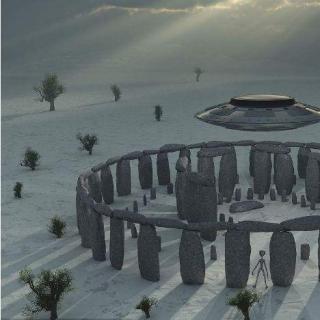
介绍:
[ NARRATOR ] 00:35:13
King Pakal's sarcophagus is adorned with a carving that has become a famous example of classic Mayan art. Most believe the illustration shows Pakal's descending into the Mayan underworld, but ancient astronaut theorists interpret the carving a vastly different way.
[ ERICH VON DANIKEN (德系口音)
AUTHOR, CHARIOTS OF THE GODS] 00:35:33
On this lab and incredible in chiseling, you see a man, and he is sitting in a sort of capsule, he has some sort of mask on his nose, and he sees his upper hand, he is manipulating some controls, from the lower hand, he is turning something on. The heel of his left foot is on a kind of peddle, and outside the capsule, you see a linking flame. This is incredible. This is absolutely a proof for extraterrestrials.
[ Background Sound ] 00:36:00 ( at a rocket launching site )
3, 2, 1, 0, lift off!
[ JASON MATELL (电池男)
ALIEN INVESTIGATOR ] 00:36:06
If you look at the similarities of what our astronauts look like when they are in a rocket ship or in a space shuttle and have gear attached to them, there are similarities being shown, so, one just has to ask the question of, you know, is this just an artifact symbolically showing something? Or are they trying to depict, with their own limited understanding of their time, what was taking place?
[ DAVID CHILDRESS (眼镜胖)
AUTHOR, TECHNOLOGY OF THE GODS] 00:36:27
Was Lord Pakal just a Mayan king that everyone rite? Was he some important visitor from some far off land? Or was he even possibly some extraterrestrial from another planet?
[ NARRATOR ] 00:36'44
Although most scientists and archaeologists discredit Von Daniken's interpretation of the Palenque carvings, visitors to the site are often treated to stories and offered souvenirs that support his claim.
[ Tourist A ] 00:36:58
This is Eric Von Daniken's theory, 《The chariots of the gods》, you see,(pointing to a picture) Pakal is supposed to be driving the rocket, holding the controls, the peddles, the engine, and the fire of the rocket, and this would be the cabin, and this is the oxygen...
[ DAVID CHILDRESS (眼镜胖)
AUTHOR, TECHNOLOGY OF THE GODS] 00:37:20
Mainstream archeologists claim that is really a depiction of Lord Pakal, and his journey to the underworld, he is going under the ground rather than out in the space. Both are interesting theories, and, Eh... either could be right in my mind.
[ NARRATOR ] 00:37'37
In recent years, Pakal's tomb has been closed to tourists and casual visitors. Although the sarcophagus is off limits, ancient astronaut theorists can still find a wealth of evidence in the carvings along the walls of Palenque.
[ DAVID CHILDRESS (眼镜胖)
AUTHOR, TECHNOLOGY OF THE GODS] 00:37:52
(In a cave) This is very similar to what's on the lead of Lord Pakal of his tomb, eh...the ways he's got his left hand right here, in a look of odd position in his wrist, all tells some kind of rocket exhaust something [that] is coming out of him...
[ NARRATOR ] 00:38'10
But Lord Pakal may not have been the only alien who once walked the Palenque ruins.
[ DAVID CHILDRESS (眼镜胖)
AUTHOR, TECHNOLOGY OF THE GODS] 00:38:16
The Mayans has such an advanced calendar and mathematical system. Why were they so obsessed with the stars? One of the most advanced of any ancient cultures, and yet the Mayans vanished around 500AD. We don't know where they went. And one explanation is that Mayans was some kind of extraterrestrials and they literally left our planet.
[ NARRATOR ] 00:38'43
But Ancient cave drawings and stone carvings are the only type of illustrations that fascinate ancient alien theorists? In 1929, historians discovered a map which had been painted onto a piece of gazelle hide. They traced the document back to a 16 century Turkish Admiral, named Piri Reis. But in stark contrast to other maps dating back to their time, the map depicts landmasses that was still, has yet, unexplored.
[ MICHAEL CREMO (感冒鼻)
AUTHOR. FORBIDDEN ARCHAEOLOGY ] 00:39:15
It shows the coast of Antarctica as it exists under the current ice cover. And that is really pretty amazing, because we attend to indicate that the map was made at a time when Antarctica was ice free, which would be many millions of years ago.
[ NARRATOR ] 00:39'39
The map also accurately charts the coasts of Europe and north Africa. But it is the illustration of north Antarctica that truly astonishes ancient astronaut theorists, because this region wouldn't even be discovered for another 300 years.
大家还在听

